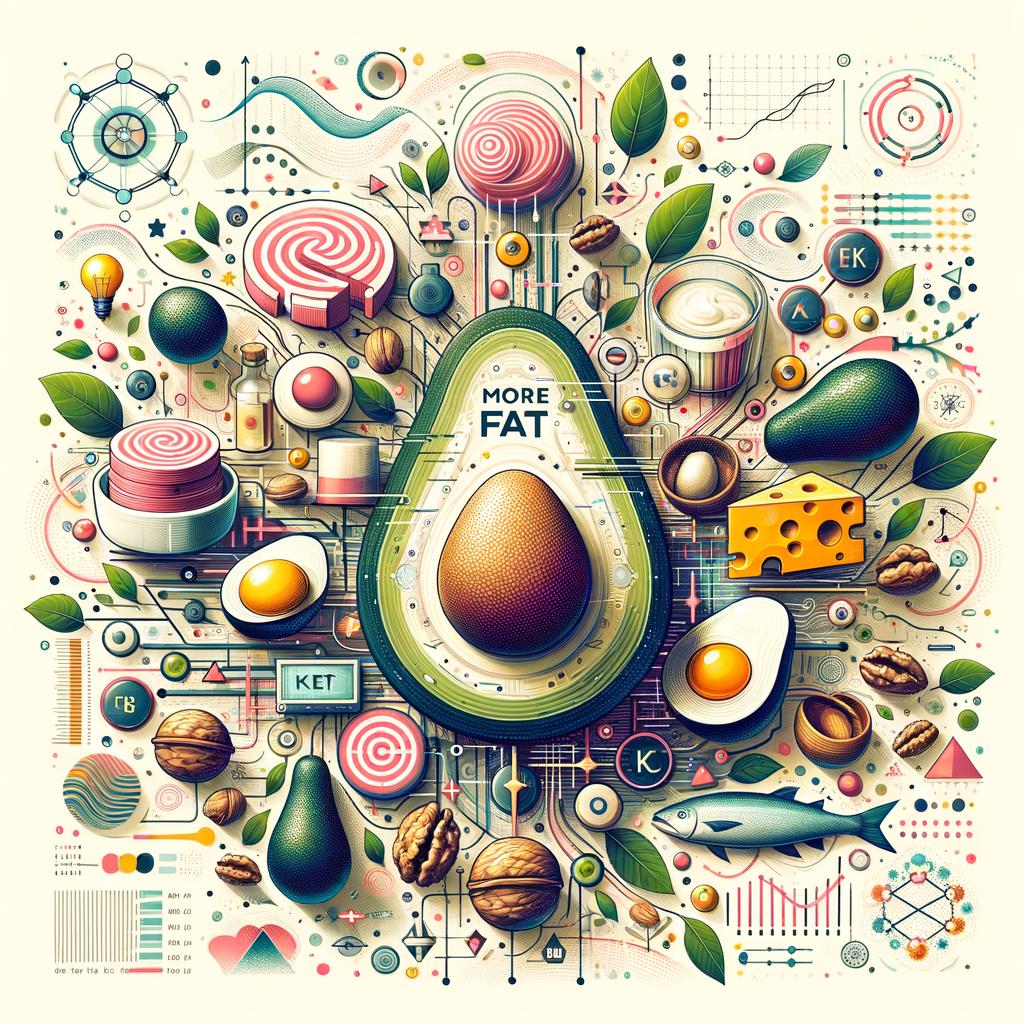
An intro about fats: A Keto Essential
Hello diet enthusiasts! How to get more fat in your Keto diet is a crucial question if you want to enhance your health and achieve your weight loss goals while adhering to the ketogenic regime. This approach might seem counterintuitive, but in the world of keto, fats reign supreme. The diet requires a substantial intake of fats—about 70% of your total daily calories. If you’re ready to embrace the keto journey, you’re in the right place. We’re about to serve you the ultimate guide on how to get more fat in your Keto diet. From recommendations on high-fat foods to meal preparation tips, all topped off with answers to frequently asked questions, we’ve got you covered.
The Fat Factor: Spotlight on Healthy Fats
Initiating a ketogenic diet often leaves people wondering about the exact type of fats they should be incorporating. It’s about as different as chalk is to cheese, with one being harmful and the other beneficial. The rule of thumb here is to opt for healthy fats. These aren’t just a key player in ketosis, but also promote overall health and well-being.
Stepping into the world of healthy fats could be like diving into an ocean, vast and deep. However, the treasures it holds – monounsaturated and polyunsaturated fats like Omega-3s and Omega-6s - have a plethora of health benefits. A game changer to say the least!
The Fat Favorites: Food Suggestions
So, here’s the good part. How do you actually go about incorporating these beneficial fats into your keto diet? Your grocery list should primarily house items like avocados, olives, nuts, seeds, fatty fish like salmon and mackerel, and various oils like coconut oil, olive oil, and avocado oil. Cheese, mayonnaise, and full-fat dairy products also top the charts.
The Fat-tastic Menu: Meal Prep Tips
Got the shopping done? Well, now it’s time for the really fun part – meal prep! Mastering meal preparation is like having a magic hat, one that makes sticking to your keto diet a piece of cake! Swap your regular dairy milk with unsweetened almond milk in your morning coffee, snack on nuts or seeds in between meals, and use full-fat dairy and oils while cooking. Incorporating a variety of fatty fish in your meals is also an excellent way to bump up your fat intake.
Fat-Forward: Correct Portion Sizes
Portion sizes make a mammoth difference. You might be eating all the right foods but if they’re in the wrong quantities, the scales could still tip in the wrong direction. Stay mindful about the amount of fat you consume at each meal. Use fats and oils generously but don’t go overboard. A handful of nuts, half an avocado, a piece of cheese – these could serve as a guideline for your fat portions at each meal.
Sip Your Way: Fatty Beverages
What’s on your plate matters but let’s not forget what’s in your glass! Yes, the drinks you choose can also help you take your fat game up a notch. For your keto journey, hydrating healthily means dodging sugary drinks and alcohol. However, you could add a spoonful of fat to nutrient-rich beverages like green smoothies and herbal tea. Ever heard of Bulletproof Coffee? It’s a favorite among keto dieters, with its blend of coffee, grass-fed butter, and MCT oil.
Smart Snacking: Fatty Snack Ideas
Snacking smart is integral to the keto diet. Snacks can help bridge the gap between meals and provide a quick energy boost. Opt for fatty snacks like cheese and nuts, or perhaps a quick guacamole dip. Even a smoothie with a scoop of coconut oil, almond butter, or avocados can offer that mini, yet powerful punch of fats you need.
Fine Finale:
Increasing fats in your diet when you’re on the keto journey may initially seem like a culinary hurdle. But in truth, it’s a rather delightful, satiating, and enriching process. A touch here, a dash there, and voila – you’re doing keto with a happy gut and body that’s primed for burning fats in a healthy way!
Frequently Asked Questions
1. I’m afraid eating too much fat will lead to weight gain. Is that so?
No, when you’re following a keto diet, eating fat doesn’t lead to weight gain. That’s because the diet is low in carbs, forcing your body to burn fats for energy instead.
2. What are the best sources of healthy fats?
Avocados, olives, fatty fish like salmon, cheese, mayonnaise, full-fat dairy, and oils like coconut, olive, and avocado are all excellent sources of healthy fats.
3. Can I include fats in my drinks while on the keto diet?
Absolutely! In fact, it’s often recommended. You can add fats like MCT oil to beverages like coffee and smoothies.
4. What are some quick, fatty snack ideas to include in a keto diet?
Reach out for cheese, nuts, or guacamole for fatty snacks. You could whip up a quick smoothie with a scoop of coconut oil, almond butter, or avocados for a fat-filled snack.
5. What portion sizes should I be mindful of while consuming fats on a keto diet?
While fats are crucial to a ketogenic diet, it’s important not to overdo it. A handful of nuts, half an avocado, a piece of cheese- these could serve as guidelines for your fat portions.


